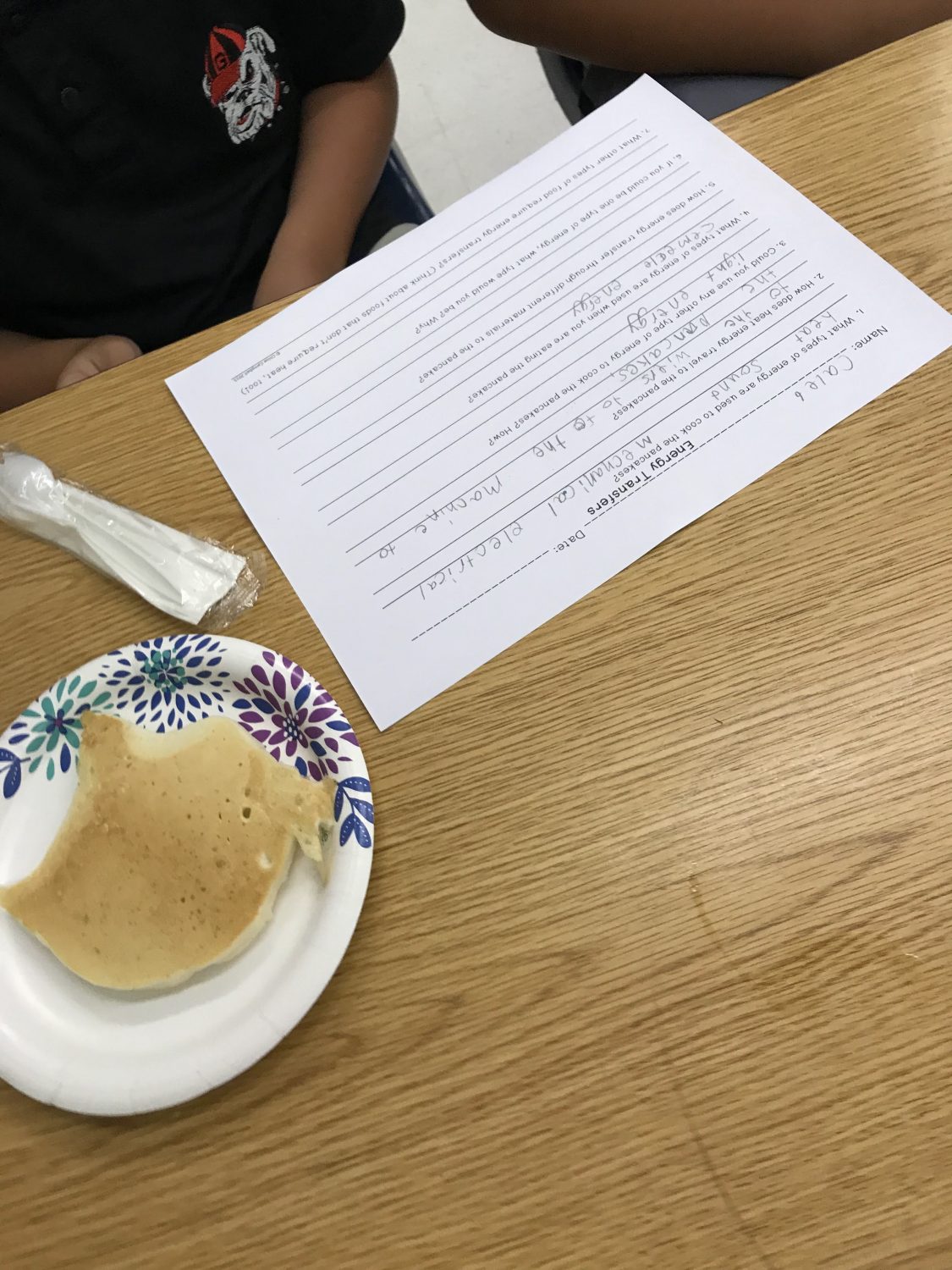It’s time to teach forms of energy, and you are trying to figure out exactly how to have fun with your students while still learning. Keeping students engaged in learning can be challenging when there is so much material to get through. Teaching forms of energy is so fun, and there are some fun tips to help you teach!

7 Tips to Help Teach Forms of Energy
When putting together lessons places that teach all about the different forms of energy, it’s important to ensure students are learning while having fun! These 7 tips will have your students enjoying science more than ever before, and they will still learn things along the way.
Tip #1: Get Them Excited
Science experiments are always a good time, and getting students excited about learning forms of energy experiments are great tools! When teaching forms of energy, adding in fun experiments or energy activities can really get students pumped for what is to come!

- Make pancakes– This is an absolute favorite when it comes to simple energy transfer experiments. Let students learn about energy transfer through the delicious art of cooking. Pancakes are easy and fun to make. Plus, students can easily see the transfer of energy throughout the cooking process.
- Use rubber bands– You can do many science experiments with rubber bands that help show energy. Create a popsicle stick catapult or a paper airplane launcher.
- Popsicle stick chain reaction– set up the popsicle sticks in a certain way and see them explode with just the right touch. Or just watch the video.
- Solar-powered appliances– One favorite activity is creating a solar-powered pizza oven or smores maker. There are tons of fun energy focused stem activities out there!

Teaching forms of energy is so much fun; adding these introductory lesson plans full of hands-on energy activities will excite students to learn!
Tip #2: Make it Visual
Some students are visual learners, and creating a chart on the board can help students visualize how different vocabulary match up with each form of energy. Electrical energy, thermal energy, sound energy, and more. You can create a great graphic organizer to get students to learn quickly about the different types of energy.

Tip #3: Energy Foldables
Foldables are a fun way to let students take notes and create something as well. Each section can give students a quick snapshot of what each vocabulary word is about and how it connects to energy. Although energy worksheets for kids are totally awesome. Using something interactive like a foldable allows students to write down and create something all at once.

Tip #4: Forms of Energy Lab
Science is all about being hands-on, and it’s no different when teaching forms of energy. Use simple experiments focused on each type of energy, like light energy or electrical energy, potential energy, or mechanical energy. Including labs can be a fun and interactive way to get kids to learn. The best thing is energy labs normally do not need many materials and can easily be put together quickly.

Tip #5: Interactive Readings
We all remember the days of reading scientific articles or stories and asking our teacher what to do next. Only for them to tell us to put them in our mailboxes or science folder because we were just reading them for “fun.” Gone are those days. We want students to interact with the reading, closely looking at different parts and answering questions when they are done reading. These activities help them internalize the information, and they can then apply it to a lab, project, etc.

Tip #6: Write About It
Writing has been proven to help students internalize their learning, and it’s important to allow all students to do so. Using a writing prompt about a form of energy will help not only students. But will also give you the data you may need to see who needs a little extra help and who knows their stuff.

Also, having students work with vocabulary while learning about types of energy is important as well. You’ll want to do more than just give them a list to memorize. Giving different options like word searches, and crosswords, and having them find the definitions independently are great ideas.
Tip #7: Have Fun!
Incorporating games is another great way to help students review the different forms of energy concepts you have been teaching. Using simple board games that do not have complex directions or rules allows students to spend more time reviewing and less time arguing about who goes first or how a game is played. Once you have finished teaching forms of energy, pull out a board game and let students play.

Get it Together!
The best thing about all these activities, science experiments, and games is how they all go together really nicely. It’s important to give students a range of activities and including all of the above will ensure your students learn everything you are trying to teach them while teaching forms of energy.
Grab the bundle here!
If you are looking for other science related ideas, check out my other science-themed blog posts here.


Leave a Reply